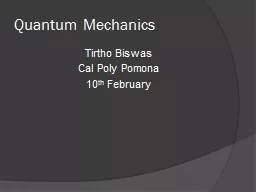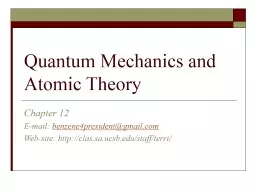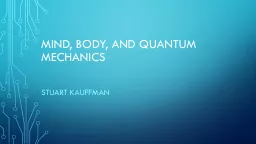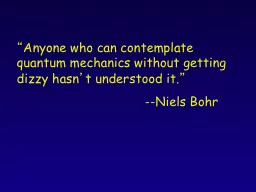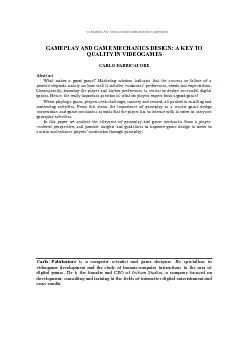PPT-Quantum Mechanics
Author : mitsue-stanley | Published Date : 2017-05-08
Tirtho Biswas Cal Poly Pomona 10 th February Review From one to many electron system Noninteracting electrons first approximation Solve Schroidinger equation With
Presentation Embed Code
Download Presentation
Download Presentation The PPT/PDF document "Quantum Mechanics" is the property of its rightful owner. Permission is granted to download and print the materials on this website for personal, non-commercial use only, and to display it on your personal computer provided you do not modify the materials and that you retain all copyright notices contained in the materials. By downloading content from our website, you accept the terms of this agreement.
Quantum Mechanics: Transcript
Download Rules Of Document
"Quantum Mechanics"The content belongs to its owner. You may download and print it for personal use, without modification, and keep all copyright notices. By downloading, you agree to these terms.
Related Documents

